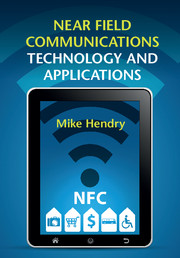Book contents
- Frontmatter
- Contents
- Part I Introduction
- Part II Technology
- Part III Applications
- 12 Marketing and advertising
- 13 Retail
- 14 Transportation
- 15 Payment
- 16 File- and device-sharing
- 17 Accessibility
- 18 Smart objects and the Internet of Things
- Part IV Implementation
- Appendix A Glossary
- Appendix B Standards
- Index
- References
16 - File- and device-sharing
from Part III - Applications
Published online by Cambridge University Press: 05 December 2014
- Frontmatter
- Contents
- Part I Introduction
- Part II Technology
- Part III Applications
- 12 Marketing and advertising
- 13 Retail
- 14 Transportation
- 15 Payment
- 16 File- and device-sharing
- 17 Accessibility
- 18 Smart objects and the Internet of Things
- Part IV Implementation
- Appendix A Glossary
- Appendix B Standards
- Index
- References
Summary
In the past ten years personal computing has become truly personal: devices such as laptops, mobile phones and tablets that might twenty years ago have been owned and administered by a corporate IT department are now owned by each employee, and Bring Your Own Device (BYOD) policies mean that personal devices are often encouraged to join the corporate network.
At the same time the home has acquired innumerable networked devices: the IT system, home entertainment, heating, automated white goods and kitchen equipment can all be linked to the home network, usually wirelessly. And even in transit from home to office, the car and public transport systems sport mobile data and WiFi networks.
Making the appropriate connections between these devices, and not allowing inappropriate connections, is now a major issue; the convenience of using a single device in every location is lost if that device cannot access the peripherals or files it needs.
Most of these connections are currently made using either WiFi or Bluetooth; Bluetooth should give adequate security for most purposes, as will WiFi provided the network is encrypted, preferably using WPA2 (WiFi Protected Access version 2). But the method of joining the network must be protected to prevent outsiders joining the secure network. Fully wireless methods are vulnerable to “sniffing” and eavesdropping attacks; using NFC to set up the link introduces a need for physical proximity, which significantly reduces those risks.
- Type
- Chapter
- Information
- Near Field Communications Technology and Applications , pp. 201 - 206Publisher: Cambridge University PressPrint publication year: 2014



